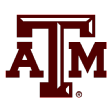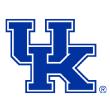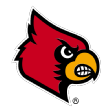Growing parity was the overarching theme of 2018-19 in women's college basketball. Next season could see even more balance. Oregon will be a favorite to return to the Final Four and Baylor should have a chance to defend its national championship, but everything else is wide open.
With a number of coaching dominoes still to fall and the inevitable run of player transfers, a lot can change between now and next fall. But that didn't stop us from taking an early look at the preseason top 25 for 2019-20. All stats refer to final tallies this season.

1. Oregon Ducks
With Sabrina Ionescu (19.9 PPG, 7.4 RPG, 8.2 APG) returning for her senior season, the Ducks are the favorite to win the national championship next spring. Ionescu -- who won the Wooden Award and Wade Trophy this season -- will lead every player of the year list, but has plenty of talent around her at Oregon, which is coming off its first Final Four. Ruthy Hebard (16.1 PPG, 9.1 RPG), Satou Sabally (16.6 PPG, 6.2 RPG) and Erin Boley (12.4 PPG, 108 3-pointers) also return as starters. Depth became an issue late this season, but the Ducks are expecting the healthy returns of guard Taylor Chavez and 6-foot-4 forward Nyara Sabally, who some have described as an on-court mix between Hebard and older sister, Satou.

2. Baylor Lady Bears
The relatively good news on Lauren Cox's knee injury in the national championship game keeps the Lady Bears in position for a repeat. The title game illustrated just how important the 6-4 Cox (13.0 PPG, 8.3 RPG, 1.7 BPG) is to coach Kim Mulkey's game plan. If completely healthy, Cox will be a favorite for national player of the year honors alongside Ionescu and anchors a still-talented roster. DiDi Richards (7.2 PPG, 4.1 APG) made a huge jump in the NCAA tournament. She and Juicy Landrum (11.1 PPG, 5.1 RPG, 3.9 APG) are both talented two-way guards. Aside from NaLyssa Smith (8.4 PPG, 5.1 RPG), the vaunted recruiting class from a year ago didn't contribute much to the national championship run, but Mulkey says she believes those young players will be ready to take the mantle. Big jumps by the likes of 6-foot Aquira DeCosta and 6-3 Queen Egbo will be imperative. Even with a recovered Cox, Baylor still has to replace All-American post Kalani Brown (15.8 PPG, 8.2 RPG). Guard Honesty Scott-Grayson might have to be ready to take over the point with Final Four most outstanding player Chloe Jackson (11.7 PPG, 5.3 APG) gone.

3. Stanford Cardinal
Tara VanDerveer will have to find a low-post threat with the departure of Alanna Smith (19.4 PPG, 8.6 RPG), but the Stanford coach shouldn't have much else about which to worry. The incoming freshman class -- led by Haley Jones, the No. 1-rated recruit according to HoopGurlz, and dunking sensation Fran Belibi -- will get plenty of attention, but the rest of the Cardinal core is back. Kiana Williams (14.3 PPG, 4.7 APG) and DiJonai Carrington (14.0 PPG, 7.5 RPG) will anchor a backcourt that also includes Lexie and Lacie Hull, and can incorporate Jones into any one of three positions. Maya Dodson and Nadia Fingall (expected back from a knee injury) should be even more productive with more opportunity. Ashten Prechtel, a 6-5 post player, is also expected to contribute immediately.

4. Maryland Terrapins
With most of its rotation players back and two top-20 recruits on the way, the Terrapins will be the big favorite to win the Big Ten championship for the fifth time in six seasons. Kaila Charles (17.0 PPG, 6.7 RPG) will be on plenty of preseason All-America lists, Taylor Mikesell could be one of the country's best 3-point shooters (41.1 percent) and 6-5 Shakira Austin has the potential to average a double-double in her second season. Ashley Owusu out of Virginia represents the top prep point guard prospect in the country.

5. Texas A&M Aggies
The same Aggies who finished third in the SEC and reached the Sweet 16 should look much like the same team next season. Gary Blair returns 97 percent of his scoring and 99 percent of his rebounding. Of course, that includes guard Chennedy Carter (23.3 PPG, 40.3 field goal percentage), the second-leading returning scorer in the country, and fellow sophomores Kayla Wells (15.1 PPG), Aaliyah Wilson (13.8 PPG), Ciera Johnson (12.0 PPG), N'dea Jones and Jada Walton. With all of that experience, Texas A&M should challenge South Carolina for SEC supremacy.

6. Oregon State Beavers
Oregon State will have size to spare with incoming freshman 6-6 Kennedy Brown and 6-3 Taylor Jones to go along with 6-9 Andrea Aquino, who redshirted this season, and 6-7 Patricia Morris, who played sparingly as a freshman. The backcourt, though, is the key to the Beavers' success and more of a sure thing. Destiny Slocum (team-high 15.4 PPG and 4.5 APG) should be even better in her second season in Corvallis at the point. Aleah Goodman (10.7 PPG) and Mikayla Pivec (15.2 PPG, team-high 9.2 RPG) provide versatility and, if Kat Tudor (46.5 3-point field goal percentage) can come back from a torn ACL in her left knee suffered in January, the Beavers also have an elite shooter.

7. UConn Huskies
The vibe around the Huskies will be different than it has been in a long time. They will not be a favorite to reach the Final Four, a place they have been every year since 2008. The connection to the last UConn national championship is also gone without Katie Lou Samuelson and Napheesa Collier -- who combined to average 39.3 PPG last season before being selected among the first six picks in last week's WNBA draft. Still, the situation is far from dire in Storrs, Connecticut, with the Huskies' three other starters -- Crystal Dangerfield (13.4 PPG, 5.9 APG), Megan Walker (12.1 PPG, 6.7 RPG) and Christyn Williams (11.7 PPG) -- returning. How much improvement Geno Auriemma gets out of Olivia Nelson-Ododa, who took some significant strides late in the season, and the possible production from incoming 6-1 freshman Aubrey Griffin will determine if there is a drop-off.

8. Mississippi State Bulldogs
For the second straight year, coach Vic Schaefer has to replace four starters yet still should have enough talent to compete for a top-10 spot. Bre'Amber Scott (7.1 PPG) and Andra Espinoza-Hunter (9.0 PPG) should be ready to take on much bigger roles, and if Chloe Bibby (11.9 PPG) can return from a knee injury, the Bulldogs will have three legitimate 3-point threats. Promise Taylor, a 6-5 transfer from Ole Miss, will step in for Teaira McCowan in the middle, but should also get help from 6-5 Jessika Carter, who spent her first season in Starkville behind McCowan. Point guard Myah Taylor, who sat out as a redshirt this season but was a five-star recruit a year ago, could be the key.

9. South Carolina Gamecocks
The Gamecocks have the nation's top-rated recruiting class coming to Columbia next season. Led by top-10 recruits Aliyah Boston, point guard Zia Cooke and forward Laeticia Amihere, some believe it's the best class the sport has seen in some time. Once a Final Four favorite, the Gamecocks will have to rely heavily on their youth. Within the past 10 days, four players -- most notably juniors Te'a Cooper (team-high 11.9 PPG) and Mikiah Herbert Harrigan (10.4 PPG) -- announced they were transferring, though Herbert Harrigan has reportedly withdrawn her name from the transfer portal. Junior Tyasha Harris (10.9 PPG, 5.3 APG) and freshman Destanni Henderson are both returning to the backcourt.

10. Syracuse Orange
Tiana Mangakahia's decision to come back for her senior season puts the Orange in a position to challenge for ACC title next season. Mangakahia (16.9 PPG, 8.4 APG) led Syracuse in scoring and was second in the country in assists and should be on most preseason All-America lists. Syracuse loses second-leading scorer and top 3-point threat Miranda Drummond (11.3 PPG), but the next seven top scorers return for Quentin Hillsman's deep rotation. A big improvement from Emily Engstler, who was a top recruit a year ago but had an up-and-down freshman season, would give the Orange offense a big boost.

11. Florida State Seminoles
One of the youngest teams in the country gets a little older and probably a little better next season. The top three scorers -- Kiah Gillespie (16.2 PPG, 9.3 RPG), Nicki Ekhomu (15.0 PPG, 4.0 APG) and Nausia Woolfolk (13.5 PPG) -- return for their senior seasons, but the rest of the core will largely be made up of second-year players, led by Valencia Myers and Morgan Jones. The Seminoles played all of last season with only nine scholarship players, so 6-5 River Baldwin and 6-1 Sammie Puisis, a pair of McDonald's All Americans, should have immediate opportunities.

12. Kentucky Wildcats
Matthew Mitchell has to replace his entire backcourt, and losing program mainstays Maci Morris and Taylor Murray -- they combined for 27.5 PPG -- to graduation is a huge blow. It is made easier, however, with the arrival of a pair of transfers. Sabrina Haines (Arizona State) and Chasity Patterson (Texas) should be the Wildcats new guard tandem once Patterson, the nation's top prep point guard prospect two years ago, becomes eligible to play in January. They will join Rhyne Howard, espnW's national freshman of the year, in a lineup that still has plenty of firepower.

13. Michigan State Spartans
Jenna Allen (12.5 PPG, 6.5 RPG), the heart and soul of the team, is gone, but she was the only senior on the roster. The Spartans shook off some early injuries to make a return to the NCAA tournament. With a full season from guard Shay Colley (14.1 PPG), plus the continued development of freshman guard Nia Clouden (12.0 PPG, 3.9 APG), Michigan State should be in position to challenge Maryland for Big Ten supremacy.

14. Louisville Cardinals
This ranking elevates if Georgia Tech transfers Elizabeth Balogun and Elizabeth Dixon become eligible right away. That decision is still to come. The Cardinals also get Cal transfer Kianna Smith, but she will sit out the 2019-20 season. Balogun and Dixon would give coach Jeff Walz a speedier way to restock after losing Asia Durr (21.2 PPG), the school's second all-time leading scorer and the second pick in the WNBA draft, Sam Fuehring (10.8 PPG, team-high 7.2 RPG) and Arica Carter (8.5 PPG). If Walz does need to rebuild with the three transfers on the sideline, the Cardinals still return veterans Jazmine Jones, Kylee Shook, Bionca Dunham and Dana Evans as the foundation.

15. Texas Longhorns
Injuries and inconsistency led to a disappointing season in Austin, Texas. Turning that around begins with All-Big 12 point guard Sug Sutton (12.7 PPG, 5.4 APG), but then the questions begin. Is Joyner Holmes (11.8 PPG, 6.7 RPG) ready to be the star she was once projected to be? Will Charli Collier live up to her billing as the top prospect of 2018 or continue to be the role player she was this season? Will 6-7 Sedona Prince, another highly regarded recruit, recover from a broken leg that cost her the season? Can Audrey Warren be the backcourt running mate Sutton needs? If the majority of these can be answered positively, the Longhorns should regain their place right behind Baylor in the Big 12.

16. UCLA Bruins
Because of what Cori Close has built in Westwood, the Bruins can withstand graduation losses of players like Kennedy Burke (15.4 PPG, 6.2 RPG) and Japreece Dean (14.1 PPG, 4.9 APG). Close can build around the athletic Michaela Onyenwere (18.3 PPG, 8.5 RPG), the club's leading scorer and rebounder, and a solid recruiting class led by point guard Jaden Owens.

17. Notre Dame Fighting Irish
The 2019-20 season will be a long way from having five WNBA draft picks in the starting lineup, but the Irish have some talented young players and a Hall of Fame coach on the sideline. Muffet McGraw brought in a top-10 recruiting class last season and its time has arrived after losing a starting lineup that combined for 80.4 PPG (91 percent) of the nation's No. 1 offense this season. Guard Abby Prohaska (14.4 MPG) was the only rookie who played meaningful minutes. Point guards Jordan Nixon and Katlyn Gilbert, and 6-4 post Danielle Cosgrove, will now become starters. The Irish probably won't get back to the Final Four or even win the ACC, but if these underclassmen learned anything, the drop-off won't be too steep.

18. Minnesota Golden Gophers
Lindsay Whalen's first season as head coach at her alma mater ended in the second round of the WNIT, but despite the loss of top scorer Kenisha Bell (19.1 PPG, 4.4 APG), the Gophers could be set for better things next season. Destiny Pitts (16.3 PPG, 81 3-pointers), Taiye Bello (9.7 PPG, team-high 11.9 rebounds) and Jasmine Brunson (8.4 PPG) are back. The final piece to a return to the NCAA tournament will be the health of guard Gadiva Hubbard, who averaged 13.6 PPG as a sophomore in 2017-18 but missed all of last season because of a foot injury.

19. Arizona State Sun Devils
After a trip to the Sweet 16, the Sun Devils have won at least one NCAA tournament game in five of the past six seasons. To do it again, Charli Turner Thorne will have to replace Kianna Ibis (14.1 PPG) and Courtney Ekmark (10.3 PPG), the Sun Devils' top two scorers this past season. As is the case most years, though, the roster is deep in Tempe, Arizona, led by returning guards Robbi Ryan and Reili Richardson (5.0 APG).

20. DePaul Blue Demons
Despite some heavy graduation losses, the Blue Demons should be the favorites in the Big East next season. With a core group of Chante Stonewall (14.3 PPG, 46.2 field goal percentage), Kelly Campbell and Lexi Held, DePaul will still play fast, space the floor and shoot plenty of 3-pointers (a nation-high 1,121 attempts last season).

21. Michigan Wolverines
Coach Kim Barnes Arico returns freshmen Naz Hillmon (13.1 PPG, 7.0 RPG), the team's leading scorer and rebounder, and Amy Dilk (4.4 APG), who led the Wolverines in assists, as she looks to build on the momentum of an 8-1 finish in the regular season followed by a first-round NCAA tournament win.

22. Arkansas Razorbacks
After an electric run at the SEC tournament and reaching the third round of the WNIT, the Razorbacks' trajectory is pointing up. Coach Mike Neighbors has big-time scorer Chelsea Dungee (20.5 PPG) to build around, but also has five of his next six top point producers back. Guard Amber Ramirez, a former McDonald's All American, is now eligible after her transfer from TCU.

23. West Virginia Mountaineers
Tynice Martin will be a full season removed from her foot injury, and Kysre Gondrezick will have a year of experience playing in Morgantown, West Virginia, giving coach Mike Carey a backcourt that should get the Mountaineers back to the NCAA tournament.

24. Tennessee Lady Vols
With Kellie Harper in place as the Lady Vols' new coach, the question turns to the composition of next season's roster. Even with Evina Westbrook (14.9 PPG, 5.3 APG) transferring, there's enough talent to put Tennessee among the 25 best teams in the country. Rennia Davis (14.9 PPG, 7.7 RPG), Zaay Green and Mimi Collins give Harper a good starting point as she adjusts to life coaching in the SEC.

25. NC State Wolfpack
Despite major injury losses, the Wolfpack put together a successful season that included a program-best 21-0 start. Repeating that will be difficult without Kiara Leslie (15.9 PPG, 7.2 RPG), but 6-5 freshman center Elissa Cunane (13.6 PPG, 6.3 RPG) gives coach Wes Moore one of the best post players in the ACC around whom to build.
Also considered: Indiana, Rice, Miami, BYU, Auburn
